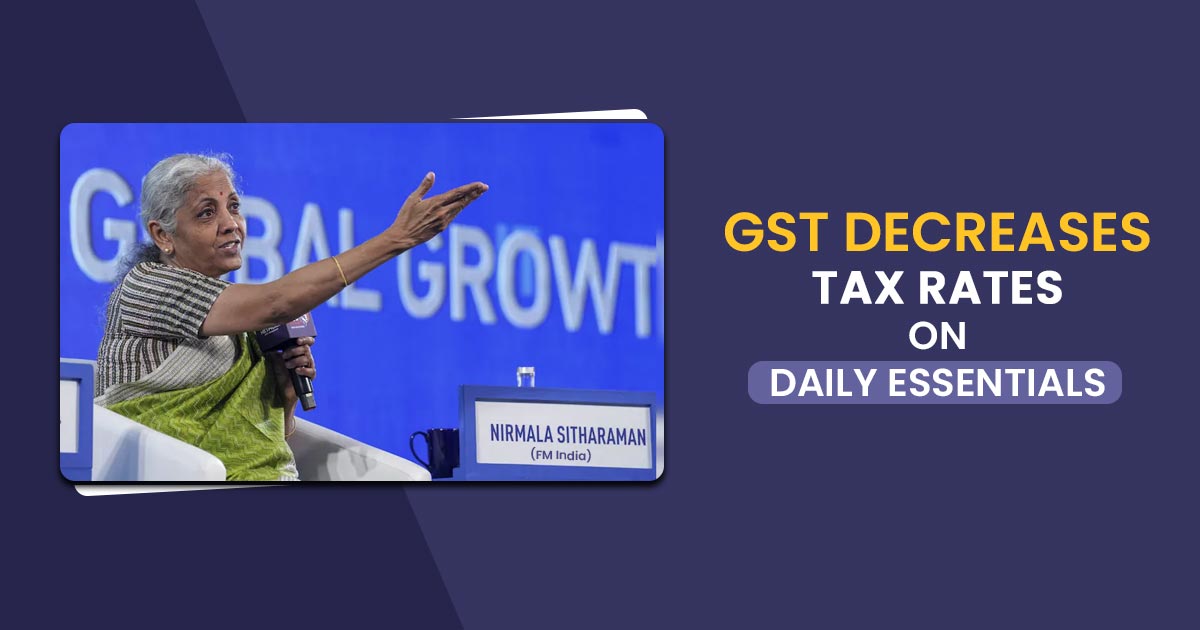
FM Nirmala Sitharaman dismissed the fact that increasing goods and services tax (GST) collections only provides an advantage before the Centre. She elaborated that the indirect tax system increases the revenue of the state by nearly Rs 9 trillion between 2018-19 and 2022-23 compared to the amounts that have been collected via the before subsumed taxes.
FM cited that it is a myth that all GST collections are received by the Centre, remarking that GST successively contributes to state revenues.
States obtain 100 per cent of the state GST (SGST) collected within the state, approximately 50 per cent of the integrated GST (IGST), and 42 per cent of central GST (CGST) via devolution established on the guidance of the Finance Commission, she mentioned.
She added that even after the finish of compensation, state revenues remain buoyant at 1.15. Without GST, states’ revenues from subsumed taxes from 2018-19 to 2023-24 would have been Rs 37.5 trillion. By adding the GST, the state’s actual revenue is Rs 46.56 trillion.
FM cited that GST has improved tax buoyancy from 0.72 per cent in the pre-GST course to 1.22 per cent during 2018-23.
Before that former chief economic advisor, Arvind Subramanian utilised the distinct parameter of the GST-GDP ratio to cite that the collections do not surpass the pre-GST level during 2023-24. At 6.1 per cent of GDP, the GST revenue for FY24 has still (after 7 years) not exceeded the level of pre-GST, he added.
Some opposition leaders have sought to reform the GST to empower states in the ongoing campaign for the Lok Sabha elections.
GST demonstrates cooperative federalism and empowers states. Out of 52 meetings, all decisions have arrived at the agreement except one, the Finance minister cited. She also said that as a chairperson of the GST Council, I have ensured all states’ voices are equally heard without discrimination.
She applauded the new tax system for being pro-poor and beneficial to 4.4 million small taxpayers and micro, small and medium enterprises (MSMEs).
FM cited that the revenue-neutral rate (RNR) of GST has been falling since 2017, showing that it is a pro-poor system, even after collections rise.
15.3% was the suggested RNR however the same was 14.4 per cent in 2017 and additionally declined to 11.6 per cent in 2019.
GST collections even after this and the COVID-19 impact on revenues as a percentage of gross domestic product (GDP) have now arrived at pre-GST levels, both net and gross, she stated.
It shows that the Centre and states, collectively, through better tax administration, can collect the same revenue with a lower burden on our taxpayers, she mentioned.
GST has lowered taxes on numerous essential items corresponding to the pre-GST period. Common items such as hair oil and soaps saw a tax cut from 28 per cent to 18 per cent, and electrical appliances are taxed at 12 per cent versus 31.5 per cent previously, she quoted.
She also mentioned that the companies pass the benefits of GST rate rationalization to consumers as ensured under the National Anti-Profiteering Authority.
Recommended: Revised GST Slab Rates in India by Council
Distinct essential items and services, like unbranded food items, certain life-saving drugs, healthcare, education, public transport, sanitary napkins, hearing aid parts, and agriculture services have been waived from GST.
She applauded the GST regime for easing the complexities and helping millions of small taxpayers and MSMEs via quarterly returns with a monthly payment scheme.
The FM Nirmala Sitharaman administered the oath to Justice Sanjaya Kumar Mishra as president of the GST Appellate Tribunal (GSTAT), defining it as the second milestone after GST collections exceeded the Rs 2 trillion mark in April.